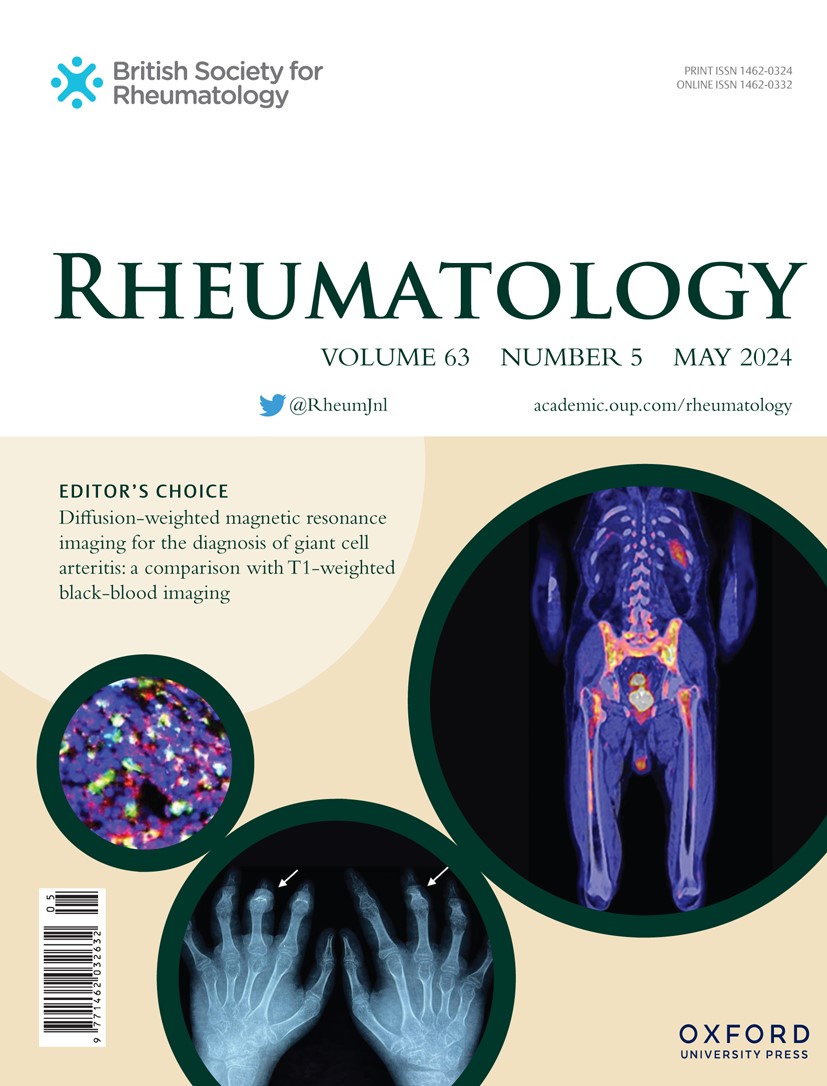Anti-HMGCR myopathy: observed ethnic differences in disease and disease outcomes in New Zealand
IF 4.7
2区 医学
Q1 RHEUMATOLOGY
引用次数: 0
Abstract
Objectives Anti-HMGCR myopathy is an immune-mediated necrotizing myopathy strongly associated with statin use in adults. Polynesians have a higher incidence of anti-HMGCR myopathy in New Zealand (NZ), but ethnic differences in phenotype and outcome are not known. Methods 91 patients with anti-HMGCR myopathy were identified based on anti-HMGCR positivity by immunoprecipitation assay. Prioritised ethnicity data was used to identify 35 Polynesian and 48 NZ European patients to include in the cohort. Clinical records were accessed and information on disease phenotype, treatment, and outcome was obtained. Results Polynesian patients were younger than NZ European patients at presentation (median 64 vs 71 years p= 0.009). They were less likely to normalize their CK over the follow-up period (54.2% vs 79.2%, p= 0.016), even after controlling for length of follow-up. There were no other significant differences in disease phenotype or outcome found. Conclusion In addition to having higher incidence of anti-HMGCR myopathy, Polynesians are affected at a younger age and are less likely to achieve normal CK levels despite treatment over similar follow-up periods. The disproportionate burden of disease in this group should prompt early assessment of a Polynesian patient who presents with muscle symptoms while on a statin.抗hmgcr肌病:观察到新西兰疾病和疾病结局的种族差异
抗hmgcr肌病是一种免疫介导的坏死性肌病,与成人他汀类药物的使用密切相关。在新西兰(NZ),波利尼西亚人的抗hmgcr肌病发病率较高,但在表型和结果上的种族差异尚不清楚。方法采用免疫沉淀法对91例抗hmgcr肌病患者进行抗hmgcr阳性鉴定。优先的种族数据被用于确定35名波利尼西亚患者和48名新西兰欧洲患者纳入队列。获取临床记录,并获得疾病表型、治疗和结果的信息。结果波利尼西亚患者就诊时比新西兰欧洲患者年轻(中位年龄64岁vs 71岁p= 0.009)。在随访期间,即使在控制随访时间后,他们的CK也不太可能正常化(54.2% vs 79.2%, p= 0.016)。在疾病表型或结果方面没有发现其他显著差异。结论:除了抗hmgcr肌病的发病率较高外,波利尼西亚人的发病年龄更小,尽管在相似的随访期间接受了治疗,但其达到正常CK水平的可能性较小。这一群体中不成比例的疾病负担应促使对服用他汀类药物时出现肌肉症状的波利尼西亚患者进行早期评估。
本文章由计算机程序翻译,如有差异,请以英文原文为准。
求助全文
约1分钟内获得全文
求助全文
来源期刊

Rheumatology
医学-风湿病学
CiteScore
9.40
自引率
7.30%
发文量
1091
审稿时长
2 months
期刊介绍:
Rheumatology strives to support research and discovery by publishing the highest quality original scientific papers with a focus on basic, clinical and translational research. The journal’s subject areas cover a wide range of paediatric and adult rheumatological conditions from an international perspective. It is an official journal of the British Society for Rheumatology, published by Oxford University Press.
Rheumatology publishes original articles, reviews, editorials, guidelines, concise reports, meta-analyses, original case reports, clinical vignettes, letters and matters arising from published material. The journal takes pride in serving the global rheumatology community, with a focus on high societal impact in the form of podcasts, videos and extended social media presence, and utilizing metrics such as Altmetric. Keep up to date by following the journal on Twitter @RheumJnl.
 求助内容:
求助内容: 应助结果提醒方式:
应助结果提醒方式:


